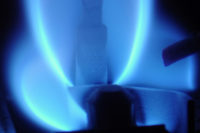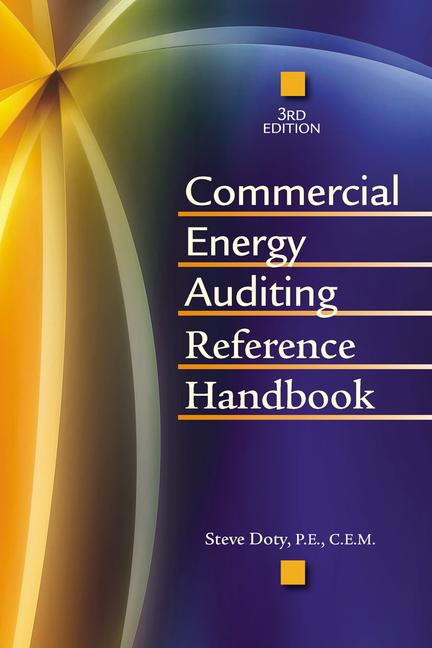
With regulations tightening and multiple strategies for efficiency available, it’s up to the enduser to make sure today’s system meets the needs and rules for both today and tomorrow.
Today’s boiler systems are focused on two main performance standards: obtaining the highest thermal efficiency, and achieving the lowest greenhouse gas emissions. Several technology choices exist today to achieve both of the above and consist of design and operational practices involving flue gas temperature, excess air, low flue gas recirculation (FGR), and selective catalytic reduction (SCR) technology. Typically, a boiler will consume its initial capital expenditure in fuel usage within its first year (based on 24/7 operation); therefore, increases to a boiler’s efficiency by just a few percentage points can amount to substantial cost savings.
MEANS TO AN END
One method of immediate efficiency gains is reducing flue gas temperature. Flue gas temperature is the temperature of combustion gases that exit a boiler’s stack. Boiler flue gas contains useful amounts of energy which can be recaptured by the use of an economizer. Economizers are used to capture and transfer the heat of the flue gas to preheat feedwater back into the boiler. In most instances, a decrease of the flue gas temperature by 40°F, increases efficiency by one percentage point. For example, a boiler firing natural gas and operating with a flue gas temperature of 350° at 82% efficiency can achieve improved efficiency by 2% with a flue gas temperature of 270°.Effectively managing excess air levels is another method to improve efficiency. Excess air is the amount of additional combustion air above the theoretical minimum that is required to burn a given amount of fuel. Although there are some benefits of increasing excess air, including flame stabilization, to promote air and fuel distribution or lowering of CO levels, there are big disadvantages that are associated with reduced efficiency. This includes increased fan horsepower consumption and increased heat loss up the stack, taking away potential energy from the boiler. A burner operating with minimum excess air (at 3% O2) is realistic for optimum burner and efficiency improvements.
Another method used to achieve low NOx performance is using FGR to control thermal NOx by reducing burner flame temperature and staging staging the combustion of air and fuel. Operating with high FGR requires significant increases in fan horsepower because of the increases in the volumetric flow and pressure drop of combustion air and flue gas through the unit. During the FGR process, burner stability and response is compromised, resulting in high O2concentrations, above a more efficient 3% O2levels.
For ultra low NOx emissions control, SCR technology is used for reductions as high as 95%. SCR technology uses a catalyst and ammonia [as a reducing agent] to convert NOx into nitrogen and water. Today’s SCR systems can perform efficiently across a flue gas temperature range of 325° to 850° for boilers and can also minimize fan requirements by eliminating or greatly reducing the need for FGR.
When an SCR system is combined with extended surface economizers and standard burners, both the benefits of low emissions and high efficiency can be achieved, accomplishing significant decreases in operating costs along with the operational benefits of improved flame stability, higher turndown, and faster response to load swings.
SCR GOES TO SCHOOL
A recent project by Nationwide Boiler Inc. for a California university, located in one of the most stringent air quality districts in the nation, involved an energy/emissions reduction solution (Nationwide Boiler’s E2Stak Solution) that resulted in substantial NOx control and efficiency upgrades. As part of the university’s boiler and chilled water systems improvement project, the university required an integrated SCR and economizer system to reduce emissions and improve efficiency at their steam plant consisting of a 40,000 lb/hr Babcock & Wilcox steam boiler. The university also required an enclosed ammonia delivering system that included ventilating fans and ammonia detection devices to increase the safe handling of ammonia.Nationwide Boiler’s E2Stak solution consisted of a CataStak™ SCR system and an EconoStak economizer. The SCR system included a stainless steel, modular reactor house for the low temperature catalyst, Nationwide Boiler’s patent-pending NOx Reduction Control System with a mass flow ammonia control valve, an ammonia injection grid and a dilution air blower. Overall, NOx emissions were reduced to less than 5 ppm, lower than the required emissions limits required by the South Coast Air Quality Management District. In addition to the system’s dramatic NOx reductions, the stack mounted economizer, designed to reduce stack temperature from 450° to 300°, resulting in almost a 4% increase to the current boiler’s overall efficiency and providing an immediate energy cost savings.
The example above showcases how Nationwide Boiler’s current boiler technology is utilized to push the envelope for ultra low NOx performance and maximum efficiency. Endusers, especially those located in areas where air quality and efficiency standards are tightening, must be proactive in evaluating solutions that can achieve the best performance possible. Systems that are designed for maximum thermal efficiency incorporate design features including no FGR for minimum forced draft fan horsepower, low excess air burners, and high turndown control. They also utilize selective catalytic reduction technology for less than 5 ppm NOx, to address and help achieve emission reduction strategies aimed at lowering greenhouse gas emissions, and reduce production and process costs.
These strategies have already been successfully implemented and have established benchmark results for many systems; therefore, it is up to the enduser to ensure that a proposed solution incorporates the best possible performance standards available. When selecting your solution vendor, be sure to go with one who offers value above and beyond the current expectations so you can be ensured that future emissions compliance and energy efficiency benefits are achieved sooner than later. TB




